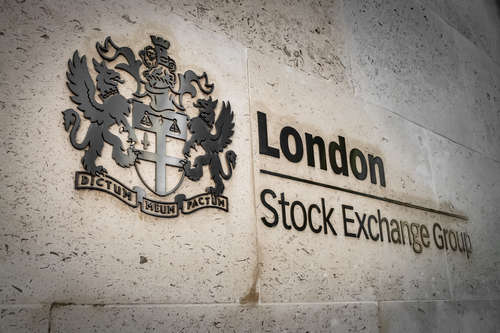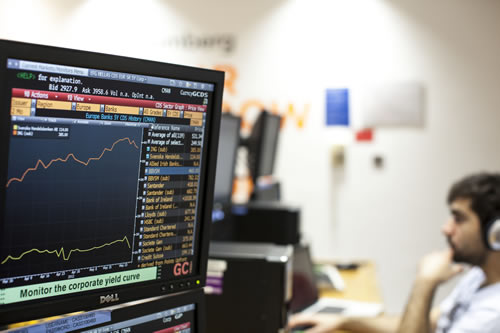The Sale of Price Information by Stock Exchanges - Does it Promote Price Discovery
An essential function of securities markets is to discover asset values. The function is critical for an efficient allocation of capital in the economy, as better price discovery in the stock market translates into better capital allocation decisions. For this reason, regulators and academics regard the maximisation of price discovery as an extremely important goal. Market design depends in large part on the decisions of stock exchanges and stock exchanges themselves are now for-profit firms. Their income derives from trading revenues and increasingly from the sale of information on prices. In this paper, we show that the efficiency of price discovery is, among other factors, determined by the fee charged by exchanges for price information.
Exchanges often supply information at various speeds, charging a higher fee to traders who receive price information more quickly. In the past, trading took place on the floor of stock or derivatives exchanges. Floor brokers had, thanks to their physical presence on the floor, a much faster access to price information than off-floor traders. Today, trading is increasingly electronic, which greatly accelerates the speed at which price information can be delivered. Yet, there still exists both fast and slow access to price and trade data. Some proprietary trading firms buy direct access to trading platforms’ data feeds while other market participants obtain the same information with a delay, at a lower cost. Trading firms buying direct access to streaming prices enjoy the informational advantage that floor traders used to have.
Therefore, do exchanges have sufficient incentives to price their real time data feeds so that price discovery is maximised or is there reason for regulatory intervention in this market? Should regulators allow fast and slow tracks for access to price information? How does differential access to price information affect the distribution of gains from trades among traders? Economic analyses of these questions are scarce despite their importance in recent regulatory debates.
To fill this gap, we consider the market for a security featuring risk averse speculators and liquidity traders. We interpret speculators as proprietary trading firms (the sell-side) specialised in liquidity provision. They post a schedule of prices (limit orders) at which they are willing to absorb liquidity traders’ orders. There are two types of speculators: the “insiders” who observe prices in real time (that is, they know all prices up to the last transaction before submitting their orders) and the “outsiders” who observe past prices with a lag (latency). As transaction prices contain information on the asset payoff, insiders have an informational advantage over outsiders. The market structures in which speculators are either all insiders or all outsiders result in a level playing field since, in either case, speculators have access to price information at the same speed. Otherwise some traders (the insiders) receive price information faster than others.
The market is organised by a for-profit exchange that charges a fee for real time price information and a trading fee (a fixed participation fee) to speculators. In equilibrium, the fraction of insiders is inversely related to the fee for real-time price information. We show that a decrease in this fee is associated with smaller pricing errors (the average squared deviation between the payoff of the security and the transaction price). Indeed, speculators bet more aggressively against pricing errors when they have information on past prices as they face less uncertainty on the final payoff of their position. Accordingly, price discovery is improved (pricing errors are reduced) when more speculators are insiders (that is, when the fee for price information is low enough).
A reduction in this fee however lowers the expected profit of the exchange in two ways: (i) a direct way (common in models of information sales): the exchange earns less revenue from the sale of information per insider and (ii) an indirect way (specific to the information sale problem studied in our paper): the fee that speculators are willing to pay for trading is smaller because pricing errors are smaller. In particular, we show that speculators’ welfare is always smaller when they are all insiders compared to when they are all outsiders. Accordingly, the exchange optimally restricts access to price information: it sets a high fee for price information so that either no speculator purchases price information or only a fraction of speculators buy this information. In the second case, the market features fast and slow traders in terms of access to price information, very much as is observed in today’s markets. In either case, price discovery is not maximal.
This policy makes the market more illiquid because it reduces competition among insiders, increasing the adverse price impact of liquidity traders’ orders and consequently their trading losses. Hence, by charging a high fee for price information, an exchange risks losing liquidity traders unless it reduces the cost of trading for these investors. We account for this effect by considering the possibility that the exchange compensates liquidity traders for a fraction of their trading losses. We show numerically that as this fraction increases, the exchange lowers its price for information, which works to improve price discovery and market liquidity.
To sum up, limited access to information on past prices softens competition among speculators. Our model suggests that this practice harms price discovery and liquidity traders. Therefore there is a rationale for regulating the sale of price information by exchanges.
The full draft report, which is forthcoming in Management Science, is available for download below.




